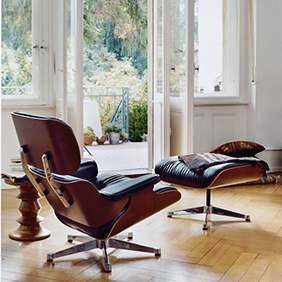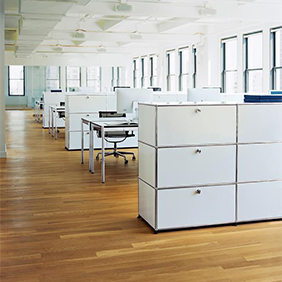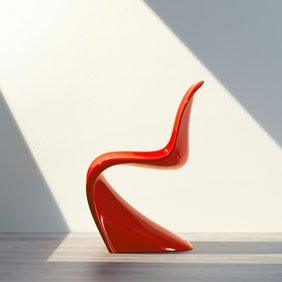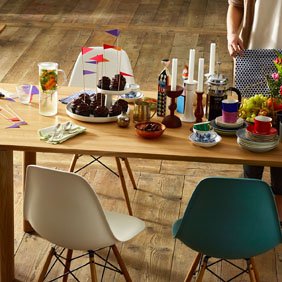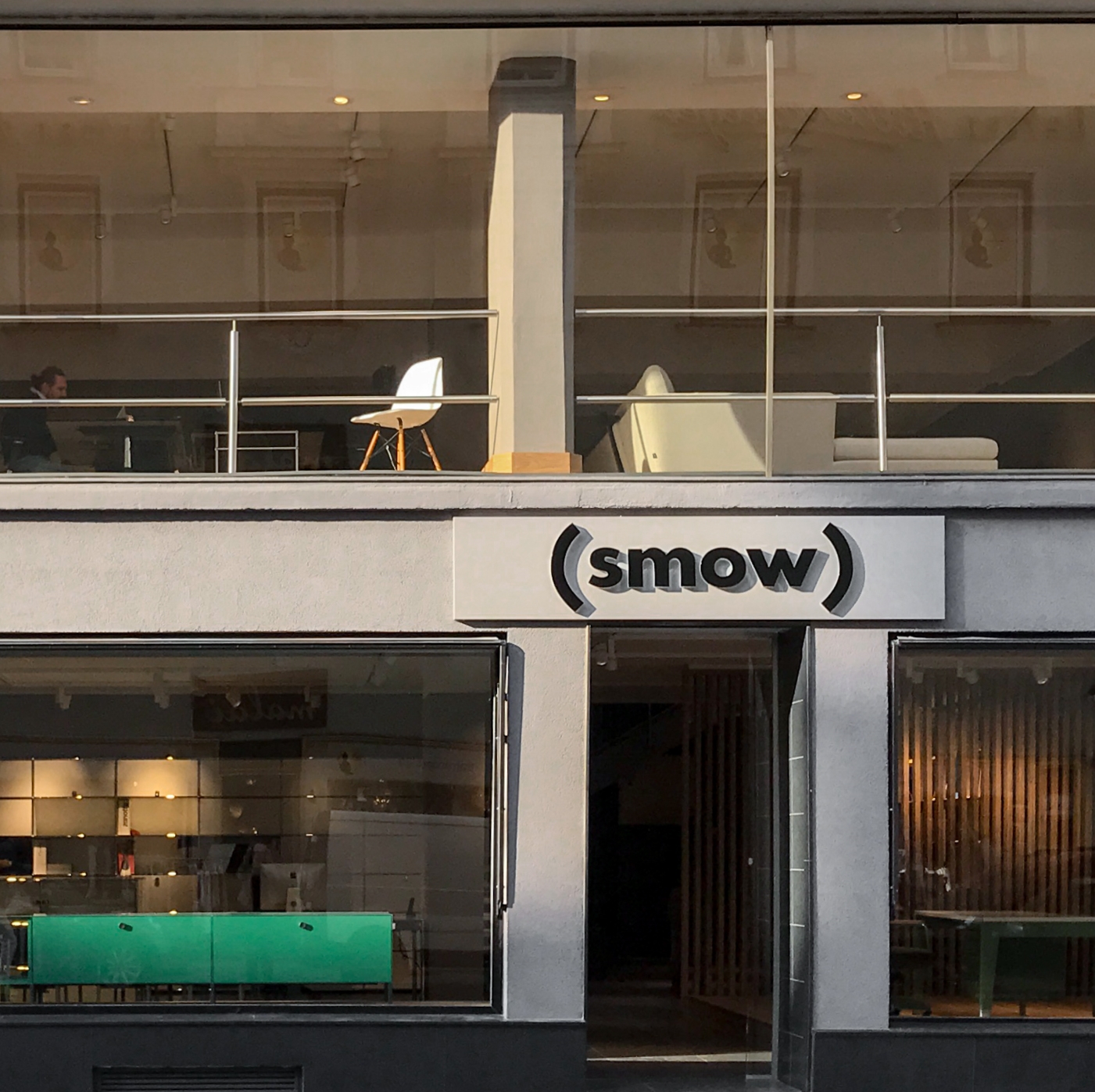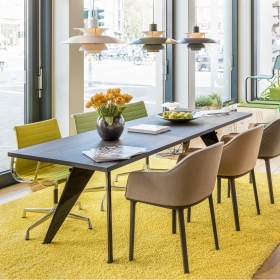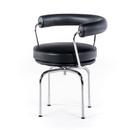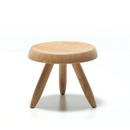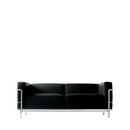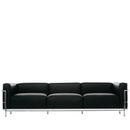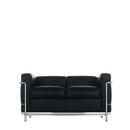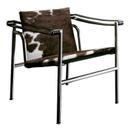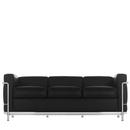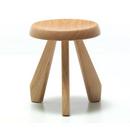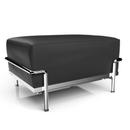Charlotte Perriand
Charlotte Perriand – Architect, Designer, Visionary
As one of the most influential interior and furniture designers of the 20th century Charlotte Perriand (1903-1999) played a decisive role in shaping contemporary living culture – even though her contribution was long overshadowed by her male colleagues and only later did she receive the recognition she deserved.
Perriand's approach as an interior designer was characterised by the use of modular, prefabricated structures that were oriented towards the needs and movement patterns of the occupants. The stated goal was to stimulate an improvement in living conditions for broad sections of the population. This socially committed approach stood in some contrast to Perriand's work as a furniture designer, which, then as now, embodies a luxurious, contemporary interior design and lifestyle.
An important part of Perriand's career was her collaboration with Le Corbusier and Pierre Jeanneret. Her influence on Le Corbusier is evident above all in the integration of warmer, human elements into his often strictly conceptual designs. This also brings Perriand closer to Eileen Gray, who challenged and fascinated Le Corbusier with the personal, and poetic functionalism of her house, E.1027.
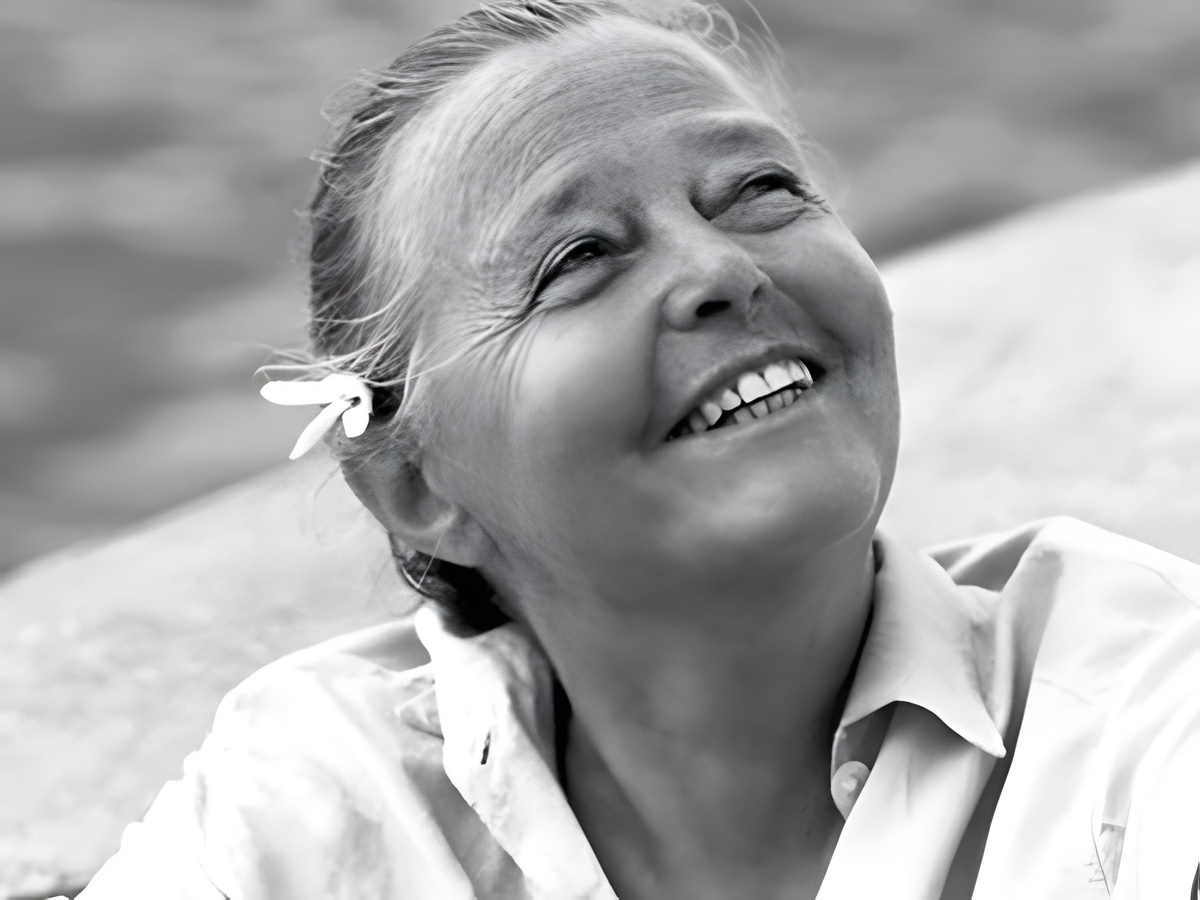
Designer Charlotte Perriand
Early Years and Education
As early as 1927 Perriand, who had studied interior design at the Union Centrale des Arts Décoratifs in Paris from 1921 to 1925, caused a minor sensation with her "Bar Sous le Toit" ("Bar under the Roof"). She had designed the bar, made of nickel-plated copper and anodised aluminium, for her own studio – and it was exhibited at that year's Salon d'Automne, attracting considerable attention.
Collaboration with Le Corbusier
Perriand's ten-year collaboration with Le Corbusier and Pierre Jeanneret began in 1927 in Le Corbusier's studio at 25 Rue de Sèvres where she was involved in all furniture designs. Between 1928 and 1929, for example, she developed the first tubular steel furniture for the "Équipement de l'habitation" project, which received considerable acclaim at the Salon d'Automne.
One of the studio's most famous designs is certainly the Chaise Longue from 1928. According to Perriand biographer Laure Adler, the patent application for the chaise longue originally listed the names of its designers in order of their contribution to its development: first Charlotte Perriand, then Le Corbusier, then Pierre Jeanneret. However, Le Corbusier then placed his name first, and at one point Perriand's name was completely removed from the authorship list.
Although Perriand left the studio of Le Corbusier and Jeanneret in 1937 (for political reasons, among others), she remained in contact with them for individual projects, such as the interior design, including the kitchen, of the Unité d'Habitation in Marseille, which was created between 1947 and 1950.
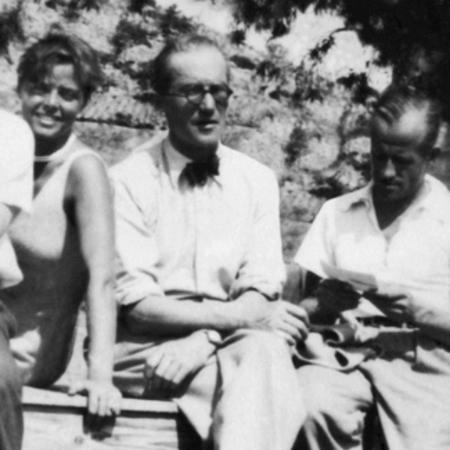
The design trio Charlotte Perriand, Le Corbusier and Pierre Jeanneret
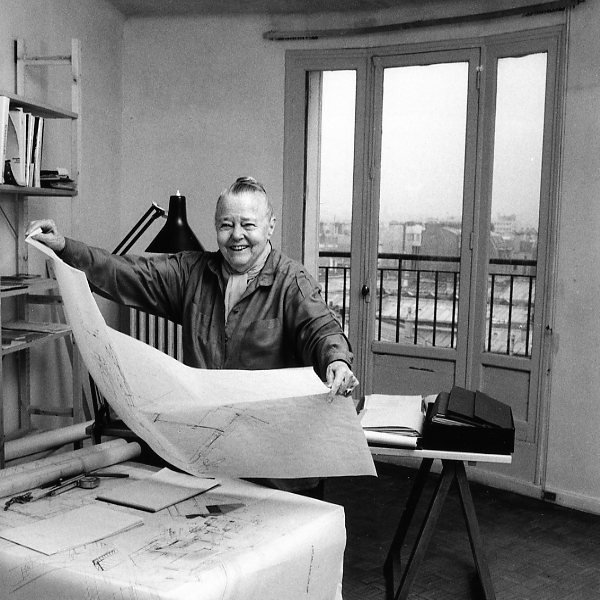
Charlotte Perriand 1991, Photo Robert Doisneau, CC0, via Wikimedia Commons
Collaboration with Jean Prouvé and Pierre Jeanneret and stays in Asia
In 1940 Charlotte Perriand founded an architectural firm for prefabricated aluminium houses together with Jean Prouvé and Georges Blanchon. After the war the focus was particularly on the development of efficient and quick to erect buildings in context of the housing shortage.
Between 1940 and 1946 Perriand lived in Japan and Indochina, giving lectures to Japanese industrialists, working as a consultant for arts and crafts, and organising exhibitions and commissions. These stays had a lasting and reciprocal influence: Perriand learned traditional Japanese craft techniques and, in turn, had a major influence on the development of Japanese design. In particular she discovered the use of bamboo for her furniture designs.
Postwar Period and Important Projects
After the Second World War Perriand worked on numerous projects for private and public clients, including offices for Air France, conference rooms for the United Nations in Geneva (1959-1970) and the aforementioned interior design of the Unité d'Habitation in Marseille (1947-1950). From 1946 to 1949, she also participated in the design of holiday homes in Méribel-les-Allues and collaborated on other projects with Le Corbusier, Pierre Jeanneret, Georges Blanchon, and Jean Prouvé.
A further important project during this period was the Brazilian Pavilion for the 1958-1959 World's Fair; however, her collaboration with Le Corbusier, who gave her detailed instructions and limited her influence, was not without its problems and from her designs, only one stool was incorporated into the final design. Perriand was not present at the pavilion's inauguration in 1959.
In the 1960s Perriand became increasingly interested in social housing; in addition to student apartments in Paris, she designed the Les Arcs ski and hotel complex in the French Alps with Jean Prouvé, whose modular structure blends perfectly into the landscape.
In the late 1970s Perriand oversaw the reissue of LC furniture by Cassina who continue to produce many designs by Charlotte Perriand, Le Corbusier, and Pierre Jeanneret. Cassina works closely with the descendants of the three designers – including Perriand's daughter Pernette – and decided to return to the collection's original French names in the early 2020s.


